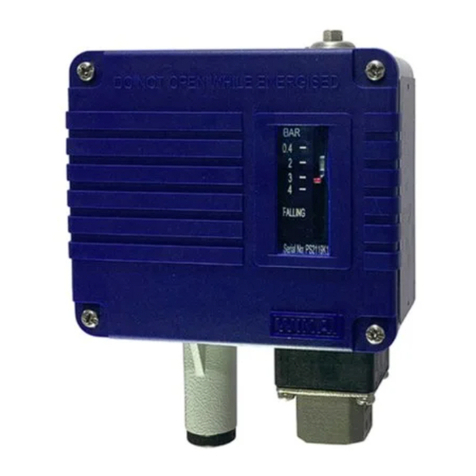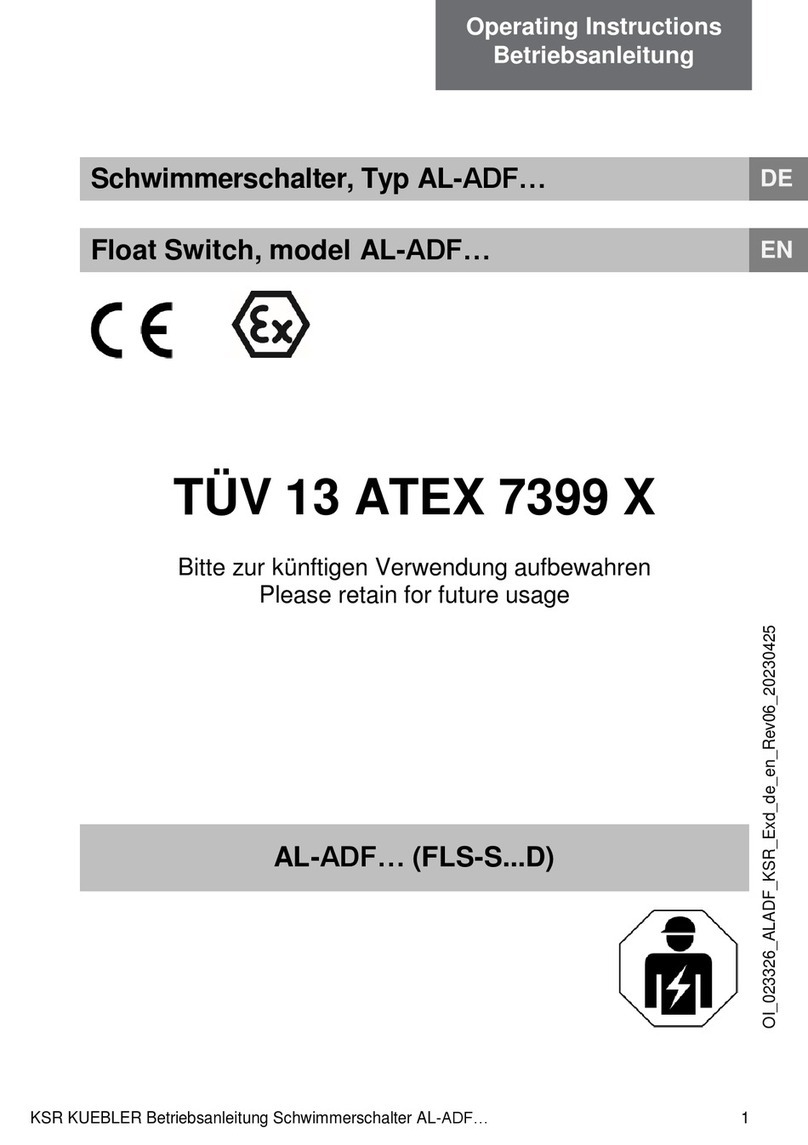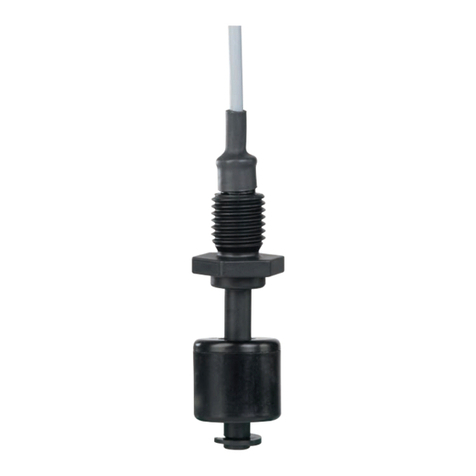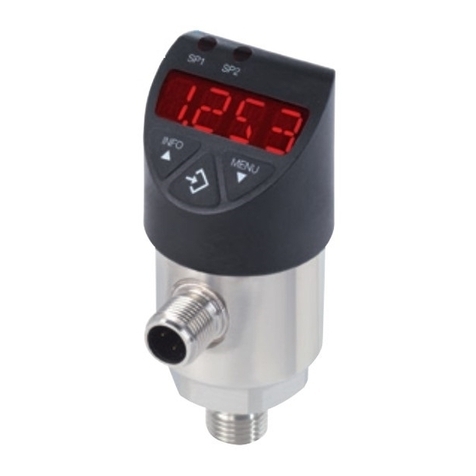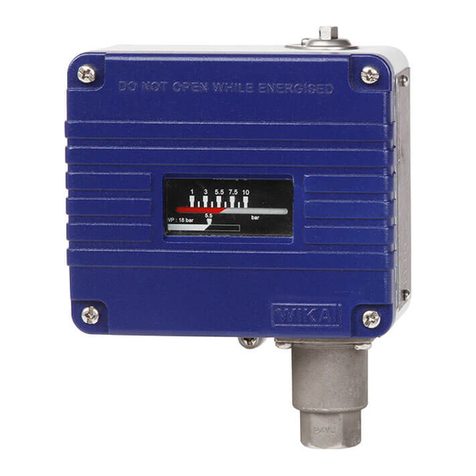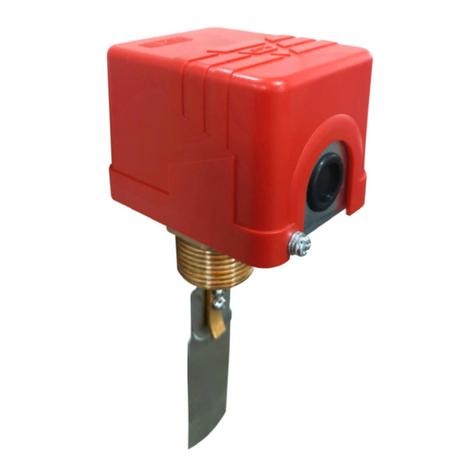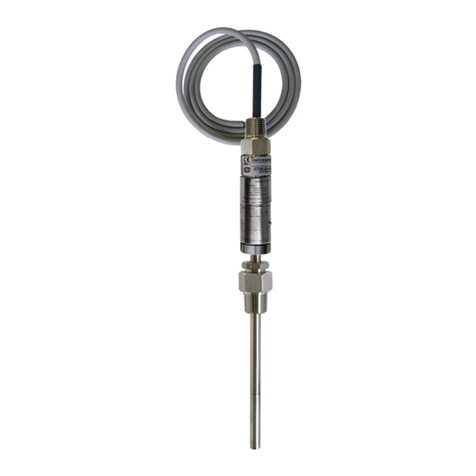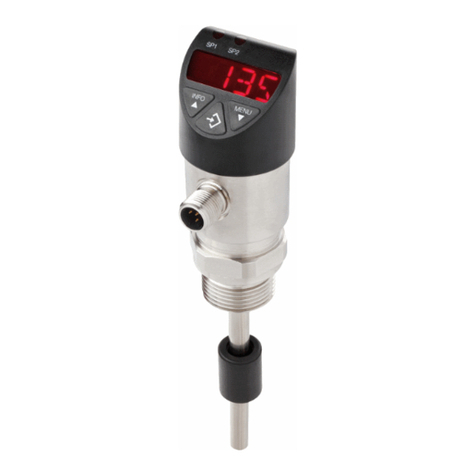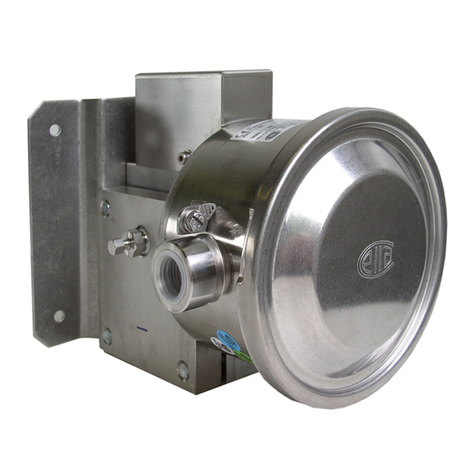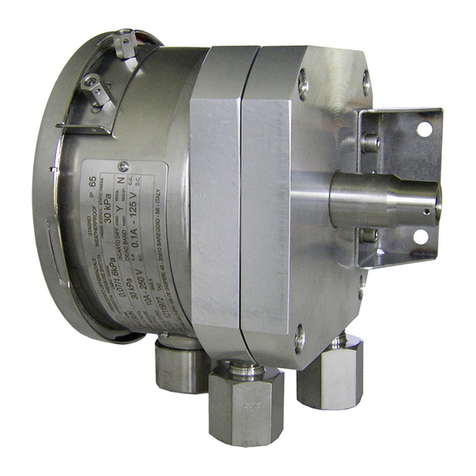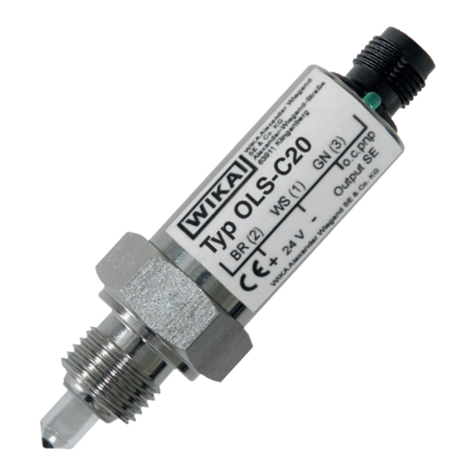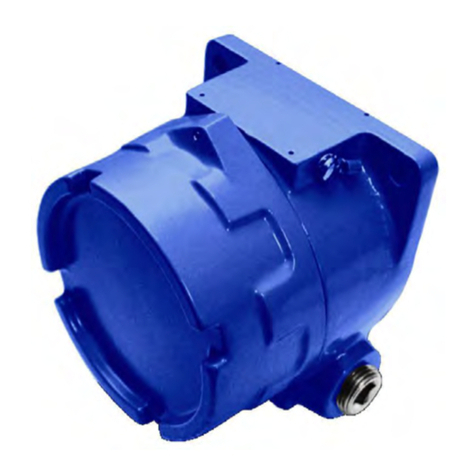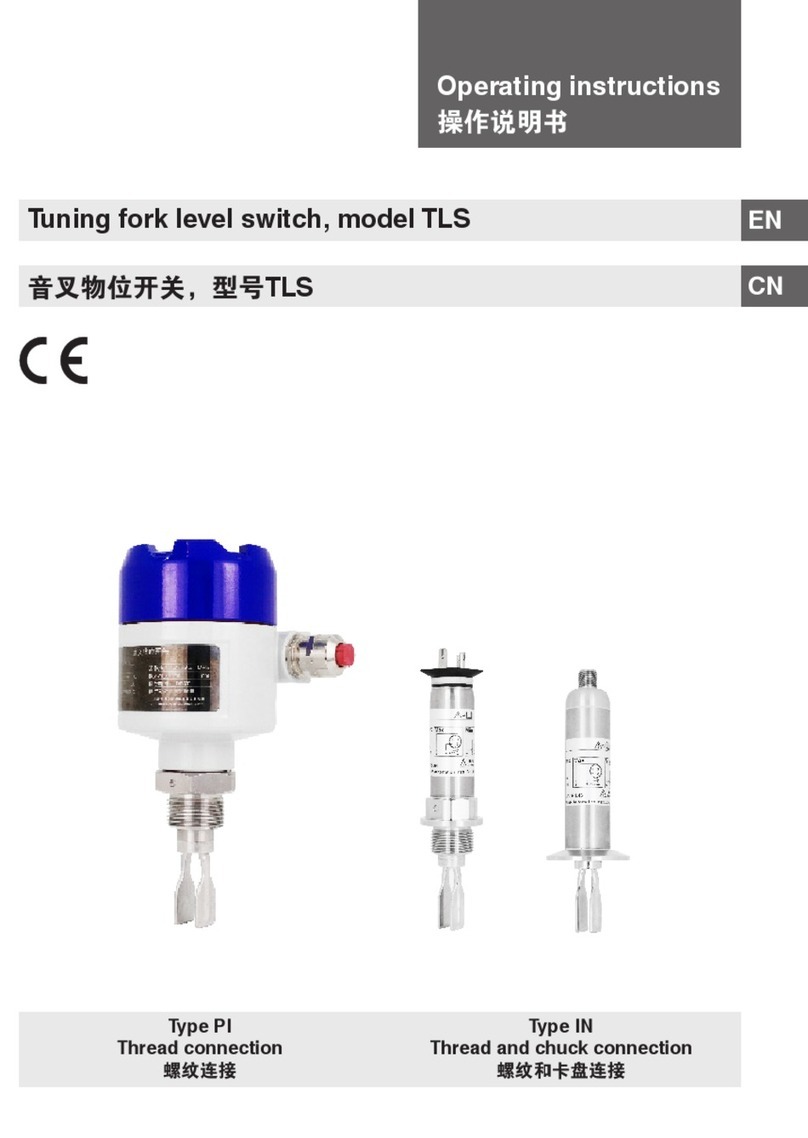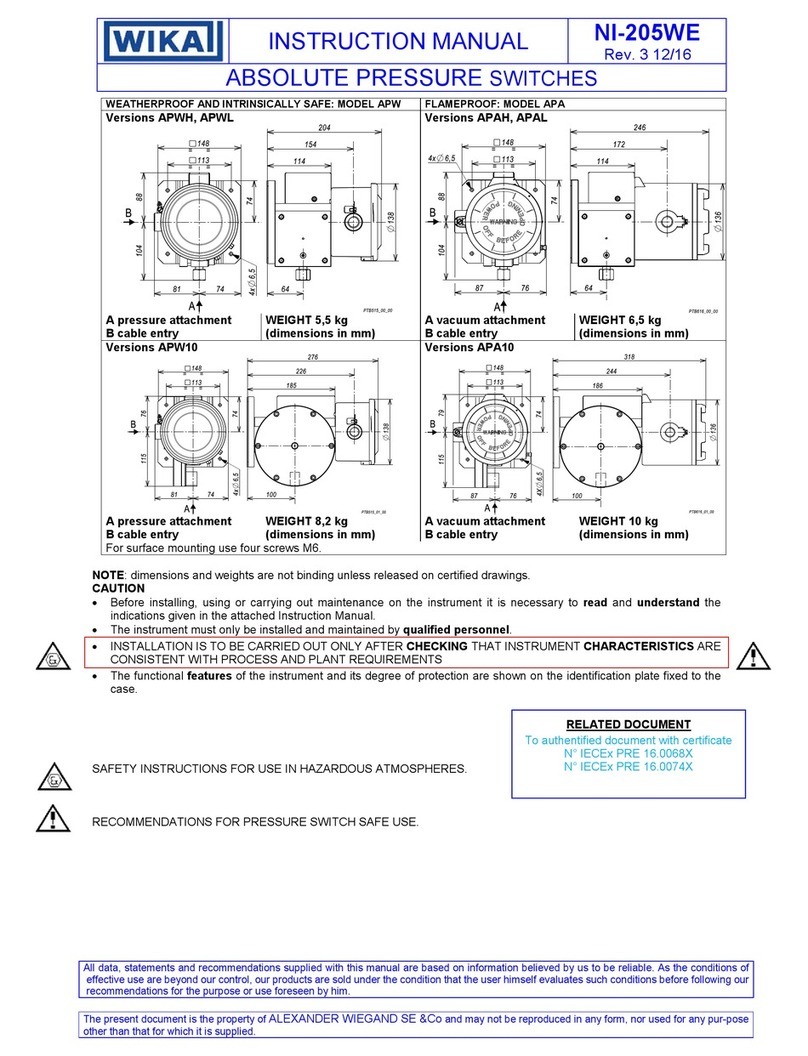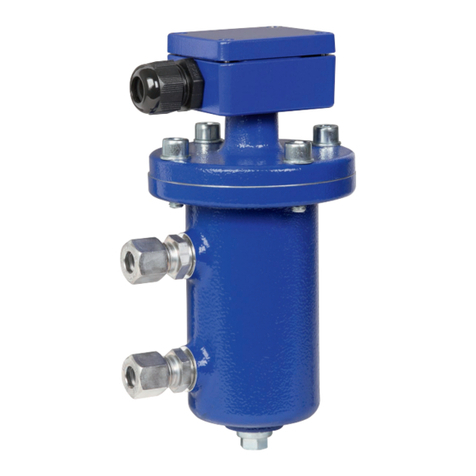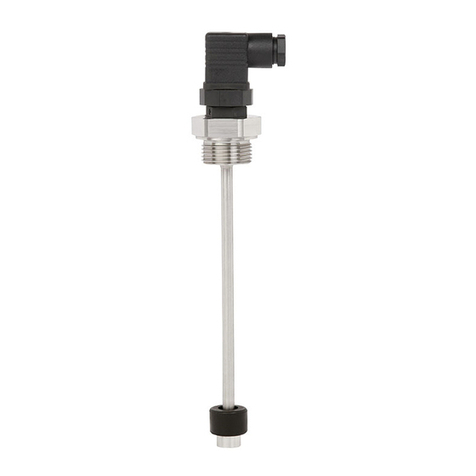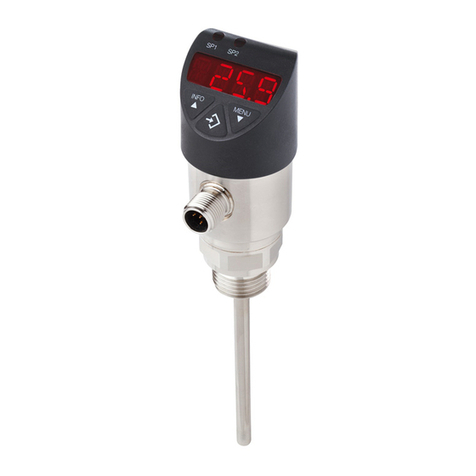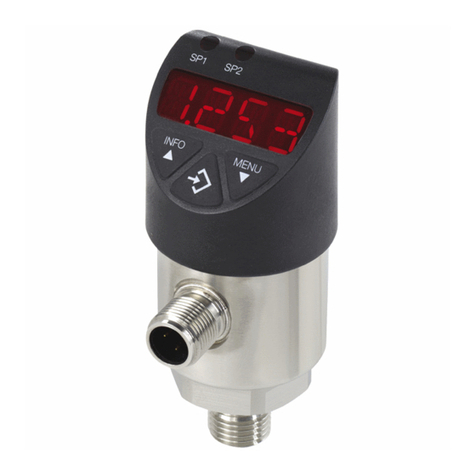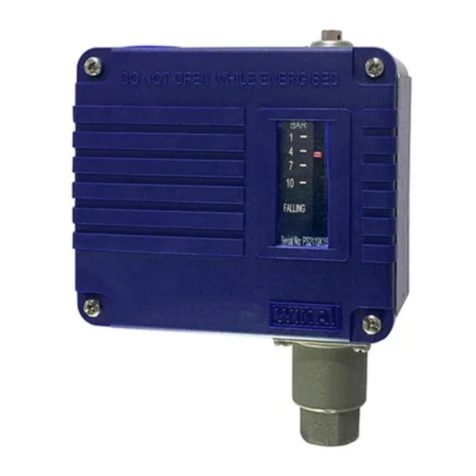
3. Safety
3.1 Explanation of symbols
WARNING!
... indicates a potentially dangerous situation that can result in serious injury or
death, if not avoided.
CAUTION!
... indicates a potentially dangerous situation that can result in light injuries or
damage to property or the environment, if not avoided.
DANGER!
... identifies hazards caused by electrical power. Should the safety instructions
not be observed, there is a risk of serious or fatal injury.
WARNING!
... indicates a potentially dangerous situation that can result in burns, caused by
hot surfaces or liquids, if not avoided.
Information
... points out useful tips, recommendations and information for efficient and
trouble-free operation.
3.2 Intended use
The model TS-972 mechanical temperature switch is fitted with
an SPDT or DPDT switch contact and is used in industrial control, monitoring and alarm
applications.The switch point can be specified by the customer on site. Depending on
the version, the instrument can switch electrical loads of up to AC 250 V, 15 A.
The TS-972 temperature switch offers many application possibilities for gaseous and
liquid aggressive media that are highly viscous or crystallising.
WARNING!
Use in the wrong application can lead to considerable personal injury and
damage to equipment.
▶Only use the instrument in applications that lie within its technical performance
limits (e.g. max. temperature, current rating, ambient temperature, material
compatibility, ...)For performance limits see chapter 9 “Specifications”.
▶This instrument is not permitted to be used in hazardous areas!
The instrument has been designed and built solely for the intended use described here,
and may only be used accordingly.
The manufacturer shall not be liable for claims of any type based on operation contrary to
the intended use.
3.3 Improper use
WARNING!
Injuries through improper use
Improper use of the instrument can lead to hazardous situations and injuries.
▶Refrain from unauthorised modifications to the instrument.
▶Do not use the instrument within hazardous areas.
Any use beyond or different to the intended use is considered as improper use.
3.4 Personnel qualification
WARNING!
Risk of injury should qualification be insufficient!
Improper handling can result in considerable injury and damage to equipment.
▶The activities described in these operating instructions may only be carried
out by skilled personnel who have the qualifications described below.
Skilled electrical personnel
Skilled electrical personnel are understood to be personnel who, based on their technical
training, know-how and experience as well as their knowledge of country-specific
regulations, current standards and directives, are capable of carrying out work on
electrical systems and independently recognising and avoiding potential hazards. The
skilled electrical personnel have been specifically trained for the work environment they
are working in and know the relevant standards and regulations. The skilled electrical
personnel must comply with current legal accident prevention regulations.
3.5 Labelling, safety marks
Product label (example)
4. Transport, packaging and storage
4.1 Transport
Check the instrument for any damage that may have been caused by transport.
Obvious damage must be reported immediately.
CAUTION!
Damage through improper transport
With improper transport, a high level of damage to property can occur.
▶When unloading packed goods upon delivery as well as during internal
transport, proceed carefully and observe the symbols on the packaging.
▶With internal transport, observe the instructions in chapter 4.2 “Packaging
and storage”.
If the instrument is transported from a cold into a warm environment, the formation of
condensation may result in instrument malfunction. Before putting it back into operation,
wait for the instrument temperature and the room temperature to equalise.
4.2 Packaging and storage
Do not remove packaging until just before mounting.
Keep the packaging as it will provide optimum protection during transport (e.g. change in
installation site, sending for repair).
Permissible conditions at the place of storage:
■Storage temperature: -10 ... +60°C (14 ... +140°F)
■Humidity: 35 ... 85 % relative humidity (no condensation)
Avoid exposure to the following factors:
■Direct sunlight or proximity to hot objects
■Mechanical vibration, mechanical shock (putting it down hard)
■Soot, vapour, dust and corrosive gases
■Hazardous environments, flammable atmospheres
Store the instrument in its original packaging in a location that fulfils the conditions listed
above.
5. Commissioning, operation
Before installation, commissioning and operation, ensure that the appropriate instrument
has been selected in terms of design and specific measuring conditions.
Tools: Star screw driver, socket wrench 6.5 mm, open-ended spanner suitably,
allen key 6 mm.
Before mounting and commissioning the instrument, ensure you read the
operating instructions!
2
1
3
4
6
5
7
2
1
3
4
6
5
7
2
3
WIKA operating instructions, temperature switch with adjustability of switch differential, model TS-972
WIKA operating instructions, temperature switch with adjustability of switch differential, model TS-972
